The process of conditioning the surface of the walls of a cylinder is known as honing. A cylinder is already honed when it is made newly made in the factory. Honing helps in lubricating the piston rings during the machinery’s operation. The main goal of a honing process is to create a crosshatch pattern on the cylinder’s walls. These patterns help the cylinder to retain oil to lubricate the piston rings.
The lubrication helps extend the life of both the piston rings and the cylinder and does not wear out quickly. The term ‘deglazing’ means re-honing and making those crosshatch patterns on the walls of a cylinder. You can do the process of honing and deglazing with the help of some of the best cylinder honing tools on the market today. These tools help in solving surface finishing and de-burring problems in your machinery.
Table of Contents
- Why is honing important?
- Buyer’s Guide: Things to know before buying a cylinder-honing tool
- List of the best cylinder honing tools available on the market
- Frequently Asked Questions
- 1. What are the applications in which honing is required?
- 2. What improvements can hone bring to unfavorable or poor bore conditions?
- 3. Honing can achieve which types of surface finishes?
- 4. What is required to establish a consistent and effective honing process?
- 5. What is the role of lubrication in the process of honing?
- Related posts:
Why is honing important?
Cylinders come in pairs in most hydraulic systems, with each cylinder housing a piston. The cylinders need to be honed after several operations, as the walls lose their crosshatch patterns. It is essential to prepare the surface for hydraulic systems to improve its lifespan, efficiency, and precision. Below are some of the reasons why honing is necessary.
- Honing helps in keeping the pistons robust and efficient.
- It reduces inconsistencies and the chances of component failure.
- It improves the transmission of hydraulic fluids between cylinders.
- Honing also facilitates a much more informed and accurate inspection of the hydraulic system.
The higher the honing quality, the more significant the results would be. One can do the precision machining process of honing with the help of cylinder honing tools. But, you need to know and understand some important factors before purchasing such tools.
Buyer’s Guide: Things to know before buying a cylinder-honing tool
Several tools are used for honing small engine applications, like a brush or rigid hones and ball hones. There are several factors to take into consideration when deciding to buy a cylinder-honing tool. One should always purchase cylinder honing tools according to the size of your cylinder bore. Before ordering, you should always cross-check the size of your cylinder bore with the company’s product information you want to order from. It is highly recommended to choose a product from a company, which gives you recommendations on the material and grit type based on the piston rings you have.
Inspect your cylinder ports and walls for damage after you disassemble your top end. There is a high possibility of a damaged cylinder if something is broken or the piston has a seizure. It is recommended to send it to a trusted shop for repair if there is extensive damage to the cylinder. If there is minimal or no damage at all, honing the cylinders should be enough. It would help if you changed the rings between the top ends. If the crosshatch patterns are minimal, the use of a brush or a rigid hone should be enough to restore the glazing on the cylinder walls. You only need to hone for 10-15 seconds per session and repeat it until the crosshatch patterns are visible.
The ball hones can be abrasive. Thus, it is not recommended to use it on a plated cylinder unless specified to be used. You need to lubricate it with a small motor oil coat if you need to hone your cylinder with a ball hone. For honing the cylinder, you first need to place the cylinder in a secure and stationary spot. Make sure you spin the ball hone before inserting it. You need to hone the cylinder for 10-15 seconds at a time with a back and forth movement. You need to switch the spinning direction to its opposite direction and repeat it until you achieve the cylinder’s desired crosshatch patterns.
After the honing process is completed, ensure no residual materials are left on the cylinder and clean the cylinder thoroughly. It is also crucial to chamfer the ports and the bottom of the cylinder. Chamfering is nothing but a symmetrical sloping edge achieved by smoothing out the sharp edges. Always remember to double-check the piston-to-wall clearance when you reassemble the top ends. Let us now look into the best cylinder honing tools available in the market today.
List of the best cylinder honing tools available on the market
1. Brush Research Cylinder Hone Tool, Silicon Carbide Abrasive
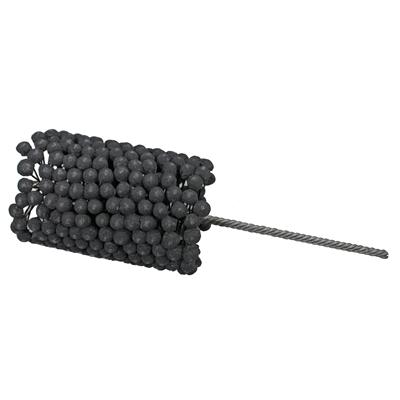

This is the first cylinder hone on our list of the best cylinder honing tools. It is from the GBD Series, and the hole-fitting size range from 3 inches to 8 inches. The sizes available are also from 3-8 inches, and the grit type available are 120, 180and 240. The string of the honing tools’ length comes in 13.5 and 17.5 inches, while the shank diameter available is 0.31 inches, 0.35 inches, and 0.42 inches. The maximum rotational speed available is 800 RPM, 700 RPM, and 600 RPM.
Pros:
- It is a flexible abrasive cylinder hone made of silicon carbide for cross-hole de-burring and surface finishing.
- It can be used by hand or in Computer Numerical Control (CNC) equipment.
- The best thing about thing tools is that it self-centers, self-aligns, and self-compensates for the machinery’s wear and tear.
Cons:
- On first use, few of the nodules break loose.
2. Engine Cylinder Honing Adjustable Deglaze Set for Grinding Holes
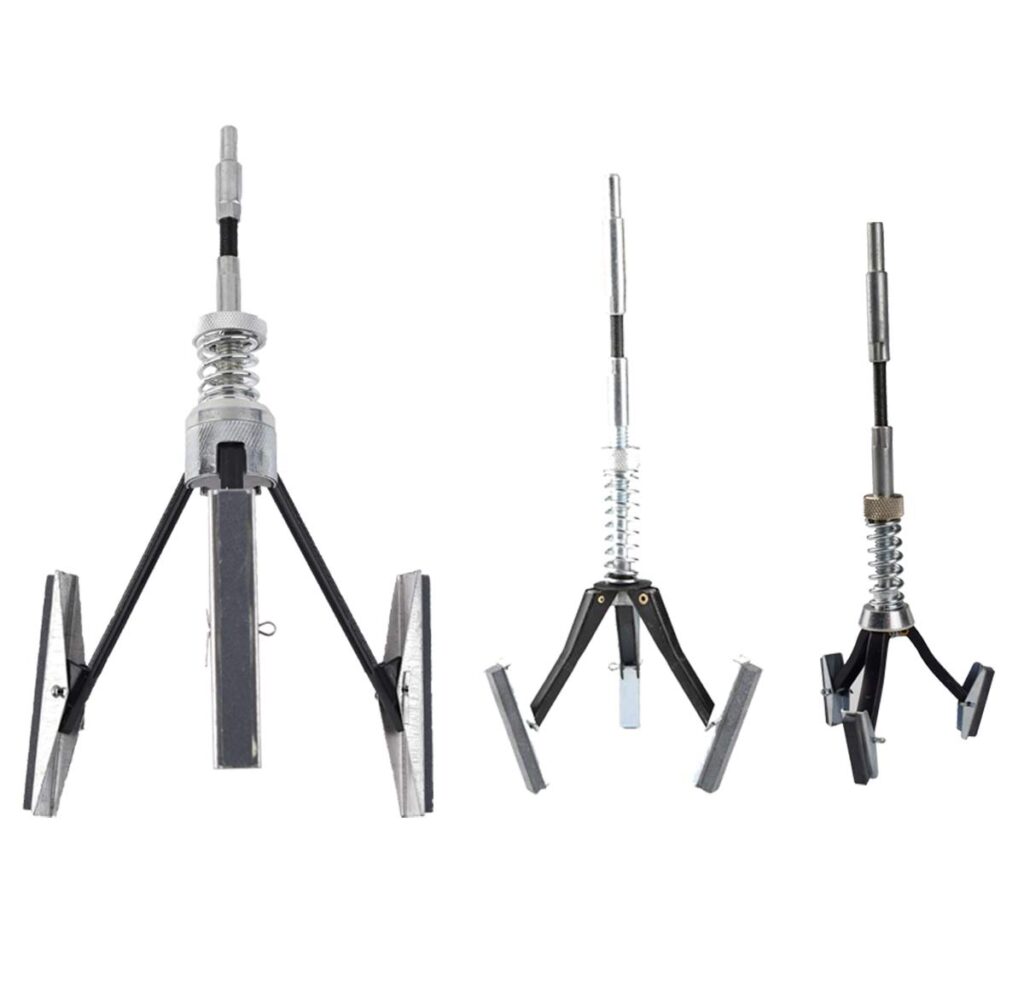

The next tool on the list is this adjustable deglaze set with six pieces of ¾ “to 2 ½ “diameter range. The design of this honing tool is of a traditional deglazing honing tool. It also comes with an additional three replaceable 220 grit stones. This honing tool’s primary function is to remove rust, carbon, and heat glaze deposits on a cylinder’s bores. Removing such materials from the bore is vital because these impurities affect engine start-ups by causing low cylinder pressure.
Pros:
- It has a knurled nut, which controls tension and is fitted with fine stones.
- The shaft is flexible and self-centering and is easy to use.
- This tool’s main features are its controlled spring action, flexible shaft, and spread control limiter. These features give it one of the fastest cutting actions and change from one cylinder to another at a much quicker rate.
3. Brush Research Cylinder Honing Tool
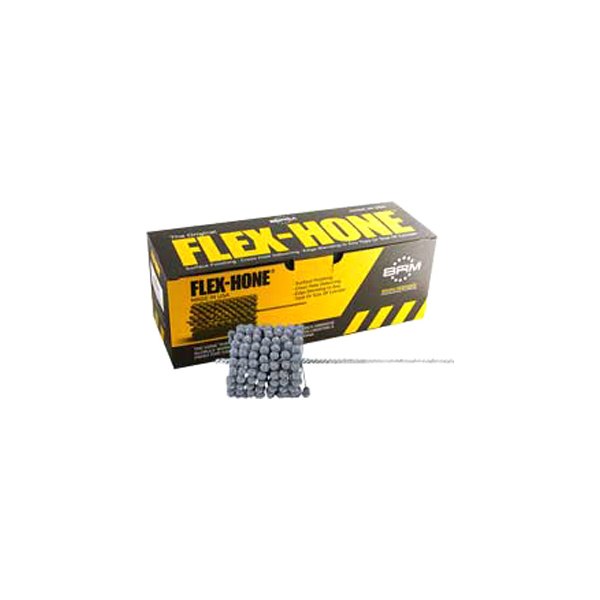

This is the next cylinder-honing tool on the list, and it is of the GB Series. The fits-hole size range from 4.125 – 4.625 inches. It is a flexible abrasive cylinder hone made of silicon carbide for cross-hole de-burring and surface finishing. The sizes available are also from 3 ½ – 4-5/8 inches. The grit type available is 120, 180and 240. The string of the honing tools’ length comes in 13.5, while the shank diameter is 0.31 inches. The maximum rotational speeds available are 700 RPM and 600 RPM. This tool has a coarseness rating of Fine.
Pros:
- It can be used by hand or in Computer Numerical Control (CNC) equipment.
- It is a flexible abrasive cylinder hone made of silicon carbide for cross-hole de-burring and surface finishing.
- It can be used by hand or in Computer Numerical Control (CNC) equipment.
- The best thing about thing tools is that it self-centers, self-aligns, and self-compensates for the machinery’s wear and tear.
Cons:
- On first use, few of the nodules break loose.
4. YOTOO Engine Cylinder Hone Tool Adjustable Deglaze
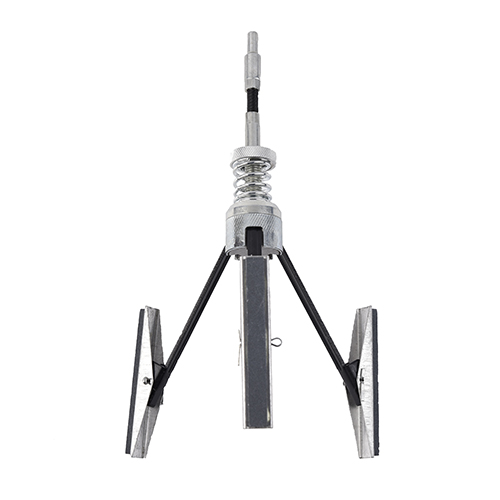

It is an adjustable engine cylinder-honing tool, which is designed for accurate and fast deglazing of cylinders. This tool is for deglazing holes that range from ¾ to 7 inches in diameter. It comes with 3-piece replaceable 4 inches long 220 grit stones. The abrasives are kept in line because of the robust arm design.
Pros:
- The heavy-duty flexible shaft is very easy to use, and it self-centers with use.
- The knurled wheel automatically adjusts the spring pressure of stones against the cylinder bore, and you can turn it clockwise to increase the pressure of stones. If you want minimal pressure, turn it anti-clockwise.
- The tools help remove unwanted corrosion and deposits in the brake, engine, and all other cylinders, and the medium 220 grit stone makes the honing process much faster and smoother.
5. Engine Cylinder Hone Adjustable
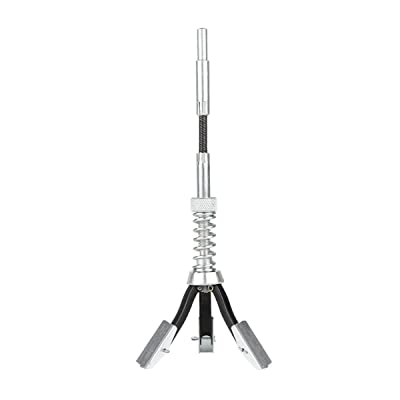

This deglazing cylinder-honing tool is for cylinder sizes, which have 2″-7″ diameter. It comes with 3-piece replaceable 4-inch long 220 grit stones. This honing tool’s primary function is to remove rust, carbon, and heat glaze deposits on a cylinder’s bores. Removing such materials from the bore is essential because these impurities affect engine start-ups by causing low cylinder pressure.
Pros:
- It has a knurled nut, which controls tension and is fitted with fine stones.
- The shaft is flexible and self-centering and is easy to use.
- This tool’s main features are its controlled spring action, flexible shaft, and spread control limiter. These features give it one of the fastest cutting actions and change from one cylinder to another at a much quicker rate.
Frequently Asked Questions
1. What are the applications in which honing is required?
Cylinder sleeves and engine cylinders require honing for sealing the piston ring properly. Cartridge valves, which are used in hydraulic applications, are honed in a typical manner. It gives tight clearances between the spool and the valve body to minimize the required sealing area. Honing gives a superior surface finish for oil seals, preventing oil leaks when combined with reduced clearances.
Honing improves the surface finish and bore diameter size of a gun barrel before the rifling operation starts. It is done to get a better shot and maintains a consistent rifling experience. A diesel engine fuel system’s components are also honed between the mating part and its bore to get tighter control of the clearance. Honing is also applicable to small engines, gears, compressors, brake drums, gas and oil flow meter tubing, and many more applications.
2. What improvements can hone bring to unfavorable or poor bore conditions?
The answer to this question is “a lot.” Honing can improve many things such as waviness, bell mouth, bore diameter size, barrel shape, rainbow, boring marks, reamer chatter, and out-of-round holes. Honing improves the bore condition, which frequently results in a quieter and more effective operation of the mating components. Old machine processes can cause errors and problems during operations. Honing can correct these errors and issues because it is indifferent to bore length and does not require alignment or chucking.
Machine operations like boring and grinding can cause a fracture to a metal’s subsurface. These fractures can sometimes go up to a depth of 0.002 inches. Machining can also cause the bore surface to harden. Honing can remedy such problems as a delicate process that generates very little heat and does not distort the bore.
3. Honing can achieve which types of surface finishes?
Honing can very precisely control the appearance, texture, and surface finish of a cylinder. You can vary the stroke speed and the spindle speed of the honing tools to adjust the crosshatch patterns’ angle and depth on a cylinder’s walls. Some applications call for a shallow angle, while others require a steep crosshatch angle. The roughness and the depth of the crosshatch patterns on a cylinder’s walls depend on the abrasive grit’s size on the honing stone. You will get a rougher finish if the grit size is bigger. Very fine grit abrasives will give you a smoother finish and creates an almost invisible texture.
Oil does not adhere well to a glazed or smooth bore surface, which causes engine failure or the machinery’s premature wear. Honing creates those crosshatch patterns, which helps retain soil on the bore surface that properly seals and lubricates the piston rings. A second honing can be done if required to create a plateau finish on the walls. It uniformly clips the peaks while leaving the valleys of the crosshatch patterns untouched. New engine cylinders that are manufactured today come with an increased bearing area of the bore surface. The piston ring break-in process is not required on these.
4. What is required to establish a consistent and effective honing process?
Several factors go into making an effective honing process. There are different questions to be answered before: What are the part material, shape and size, and the production volume? How much material needs removing and the bore tolerance of the work piece, and the surface finish requirements. The answers to these questions will ultimately result in the quality of the finished product. The answers will determine the tools, machine’s abrasives, oils, and coolants used in the process. It will also determine the parameters like the feed rate, stroking speeds, and spindle speeds.
You should also carefully decide and pick the honing stone depending upon the material part to be honed, the amount of material to be removed, or the tolerances to be achieved. Different types of turning cutters or milling stone cutters are categorized by grit size, grit material, and a bonding agent.
5. What is the role of lubrication in the process of honing?
Water-based coolants and honing oils provide the lubrication needed by bringing new abrasive grit to the stone’s surface and washing away the already cut materials. This is done to maintain and achieve optimum cutting action of the tool. When honing oil is saturated with the active surface agents, it increases the honing pressure because it provides the necessary amount of lubrication required.
When lubricity agents are combined with sulfur pressure additives, it prevents tears and weld on the work piece. This action also helps keep the honing stones nice and clean, resulting in a much consistent surface finish. There are many honing oils available today, with different formulations having different viscosity levels. 100% vegetable-based oils are also available, which are environmentally friendly too.



